Gateway to China
Welcome to Xiamen, 'China's Gate', a remarkable city on the country's southeast shores that has a long and illustrious history, fantastic weather, and incredible food
With two airports and three train stations, Xiamen is an easy city to reach. We arrived via a 4 and a half high speed train from Hangzhou - a fairly comfortable experience, even riding in second class, hitting speeds of more than 300 kilometers per hour - before catching a 40 minute DiDi (China’s ubiquitous ride hailing service) into town. Visiting for just five days, there was much to see and do before it was time to leave.
Finding Forts and Food
Dumping our bags at the hotel, we headed straight out to the Hulishan Fortress. Built in 1896, the fort once guarded the main channels to the city, with huge German-built Krupp guns facing the water to protect against attack. As far as we could tell, they had mainly just been a deterrence to invaders, apart from a major incident in September 1937 when they were fired in anger, damaging the Japanese destroyer Wakatake. As well as old barracks to explore, and dozens of different cannons dating as far back as 1896, when the fort was constructed, there’s also a show every day at 10am and 4pm where staff dress up as Qing soldiers and playact at loading and firing the Dutch guns.
Once you’ve had your fill of stone walls and ocean views, find your way to the scenic coastal path that wends its way south of here, and follow it for an hour’s walk to the former fishing village of Zengcuo'an. Although the fishermen are long gone, it’s now a foodie paradise, with the small lanes lined by restaurants, fruit stalls, dessert shops, and even a roti stand. We sat down at one small eatery, and ordered up plates of local seafood favorites, including shrimp noodles (虾面, xiā miàn), spring rolls filled with peanuts, oysters and seaweed (薄饼 báobǐng), and fish ball soup (鱼丸汤 yú wán tāng), but had to turn down an offer of sand worm jelly (土笋冻 tǔsǔndòng), which is exactly what it sounds like: sand worms that are boiled and dissolved, then chilled into jelly.
The Island Time Forgot
The next day we were off to Gulangyu, a remarkable little island directly offshore from the Xiamen mainland (which is in fact an island itself) that was once home to a large foreign community. First occupied by the British in 1841, an international settlement was formally established in 1902, with the agreement signed by 13 different countries. Then known as Kulangsu, the small island thrived, with the construction of not just residences, but hospitals, schools, consulates, churches and shops. It became hugely prosperous until, following a brief Japanese occupation during WWII, it was returned to China in 1943. Remarkably, much of the Victorian-style architecture remains across the island, and has resulted in it becoming one of China’s most-visited attractions.
Oddly, though there is a ferry that shuttles across the narrow straight, taking just two minutes, it only runs in the evenings, meaning day trippers have to schlep up to the huge cruise terminal, a 20 minute drive, to then catch the 20 minute ferry back (except for island residents). Given the numbers of visitors it does admittedly make sense, and at least you get to take in more of the scenery on the way there. Once you arrive on the island itself, you can then wander around the many paths that criss-cross the island.
We visited the local branch of the Palace Museum, which held interesting artifacts, then found a few hilltop viewing points to get our bearings, although the kids took it as more of a chance to go rock climbing. There are some ‘must-sees’, though you have to buy tickets and queue, and we found it more interesting to get ourselves ‘lost’ on the back lanes, away from the crowds, picking up local snacks like deep-fried tofu spring rolls (炸五香 , zhá wǔ xiāng), sausages on a stick, and 烧仙草, shāo xiān căo, a pudding made from herbs, and served on shaved ice with a cornucopia of toppings.
In the evening, as the night fell, we found our way to the ‘town square’, where rival restaurants touted for business. Picking up yet more street food, we slowly walked past beautiful heritage buildings until we eventually boarded the ferry for the short hop to the mainland. From here, it was a walk down Xiamen’s famed Walking Street, Zhongshan Road, a kilometer-long stretch of shopping that has been drawing crowds since 1925, and is heralded as the city’s version of famed Nanjing Road in Shanghai. While it was bustling and full of energy, the shops did seem somewhat repetitive, and the experience was not nearly as quaint - or interesting - as that found on Gulangyu.
Garden City (and market)
Xiamen is home to a huge botanical garden, covering some 500 hectares in the city’s southwest, on the slopes of Yangtai Shan ('Balcony Mountain'). Founded in 1960, it’s home to 9,000 species of plants, 1.8 million trees, and a camphor tree planted in 1984 (also the year he signed the Joint Declaration with the UK to return Hong Kong) by then Chinese leader Deng Xiaoping. It’s meant to be one of the largest in China, and is quite a remarkable space. On the weekend, when we visited, it was crowded with families strolling the grounds, having picnics, and making use of the playgrounds.
We wound our way up the hillside, visiting various sections. The botanical gardens is split into 20 themed areas, meaning it’s unlikely you’ll be able to see them all. For us, the highlights were the Rainforest World, with its mist-filled air, and tropical plants - though it was a little on the crowded side with couples taking romantic photos. It was similar scenes in the Rose Garden (for obvious reasons), but we particularly liked the Cactus section, which contained outdoor and indoor specimens, including the famed Golden Barrel Cactus, which at 4 meters tall almost touched the soaring ceiling. To get back to the entrance, from here you can take a quiet hillside path that leads you to a rock outcrop with views over the entire valley, and then wends its way downhill.
If you’re not convinced to spend a day at the botanical gardens, you can instead get a birds-eye view from the nearby cablecar, which starts near the park’s west entrance. While they technically sell single tickets, almost all passengers get a return - the reason being there’s not much to see at the end. The whole journey in the open-air cars (don’t visit on a rainy day!) takes around 45 minutes, and it’s a relaxing and scenic way to see much of Xiamen, including Gulangyu in the distance, and the busy port. Exiting the botanical gardens or cablecar, you’ll pass what looks like a former train line, converted into a small park and walking path. We had a quick glance and headed back to the hotel, but an online search later that evening revealed it was much more.
Leaving the kids back in the room, we headed out for an evening wander, and just happened to come across an amazing evening food street. Leaning towards seafood, naturally given Xiamen’s coastal location, we walked for more than 2 hours passing stall upon stall of street snacks cooked to order, brightly lit fish tanks drawing you into sit-down restaurants, carts selling freshly squeezed sugarcane juice, and shops selling dried snacks. Known as the city’s 8th Market, or Ba Shi, and located along Kaihe Road, it’s famous for selling nostalgic Xiamen dishes, and was packed with locals when we visited. We tried everything in sight, before finally calling it a night.
We Walk the Line
Just before going to bed, I recalled the train line park from earlier, and looking it up realised that it went for much longer than I’d thought, extending to nearly the coast. With an afternoon train to catch the following afternoon, there was just time for one last walk. Leaving the others to sleep-in, my daughter and I headed for the start of the Railway Culture Park, as it’s known in English, stopping to grab a breakfast of fried pancake. Excitedly beginning our stroll, we walked down old tracks which were once a single track freight and passenger line bringing people from the hinterland to the Gulangyu ferry. For an hour and a half we didn’t see any other foreigners, mostly older folk out for their morning exercise. A highlight was the long tunnel, with its display of vintage train photos, but so was the father-daughter conversation, and the tasty bag of tangerines we bought. We talked non-stop before, sadly, reaching the end of the line.
Epilogue
We were only there for five days, but there was just so much to see in Xiamen. I didn't even write about the hipster Shapowei Arts Village, with its vintage shops, cultured cafes, craft beer bars, sweet shops and weekend arts market; and our day trip to see the famed tulou roundhouses, which warrants its own story (coming soon). In sum, I can’t recommend Xiamen enough. You likely won’t see many other foreigners, but there’s so much life to this incredible city you’ll feel lucky to have it ‘all to yourself’.


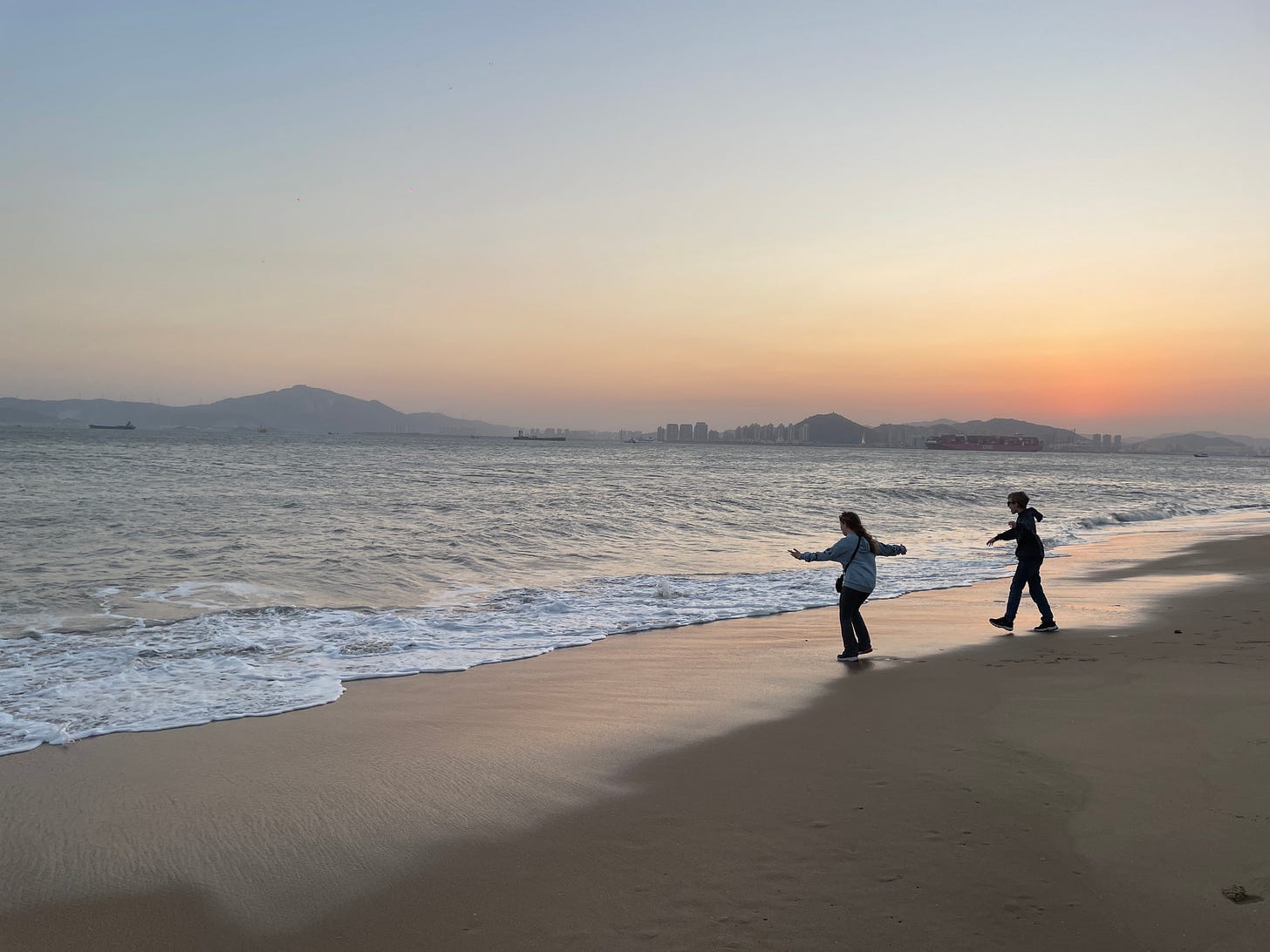

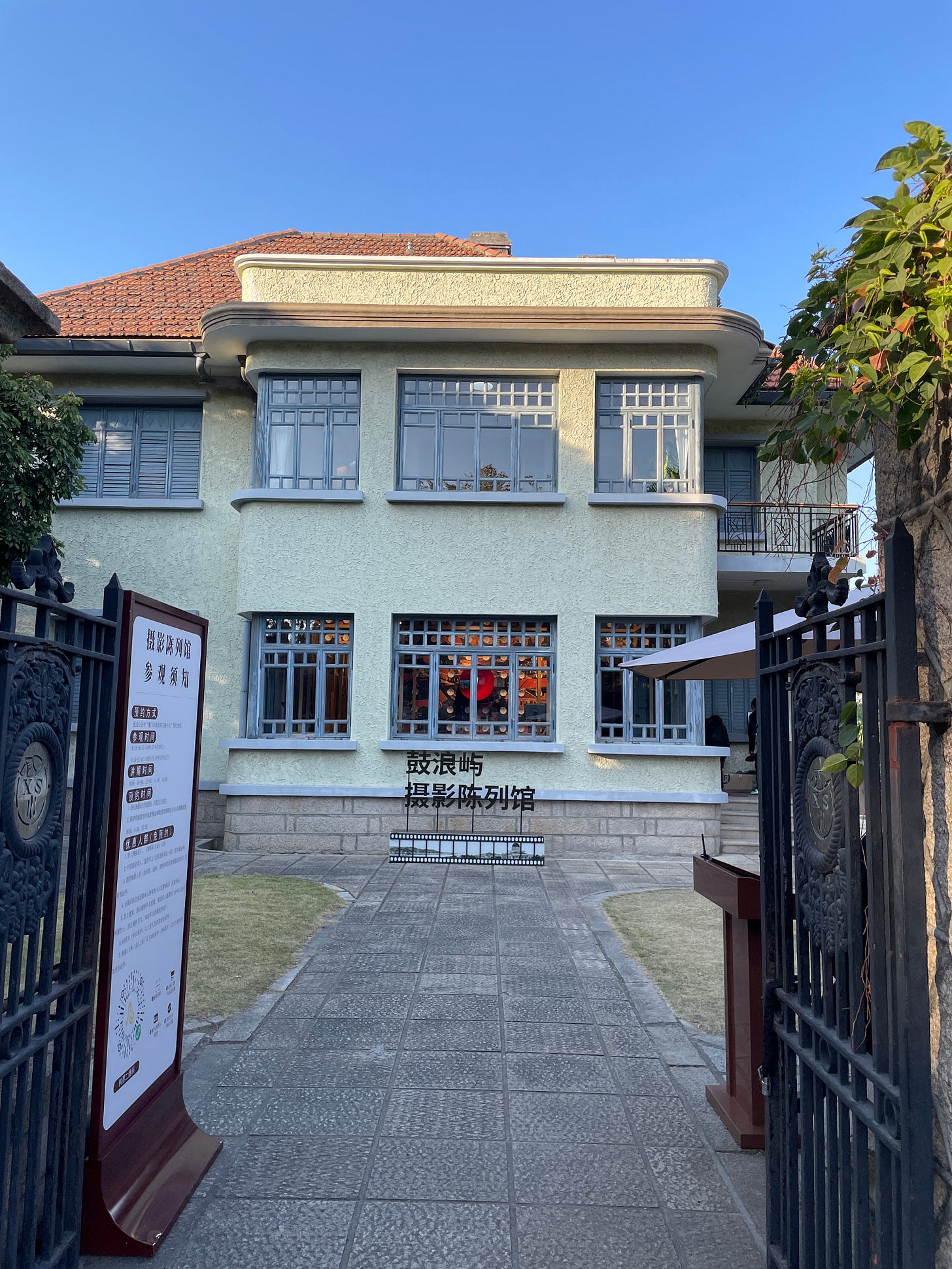
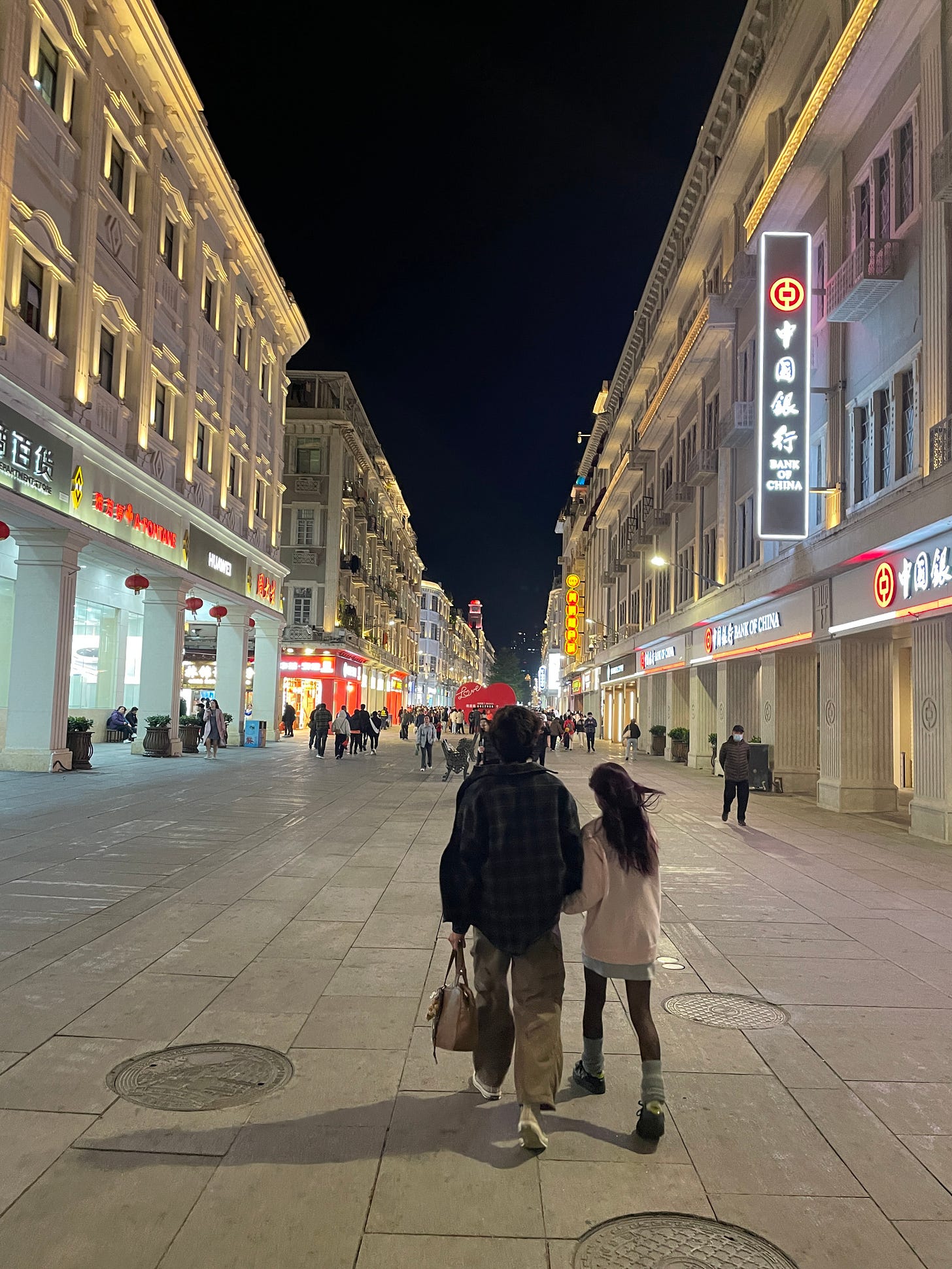
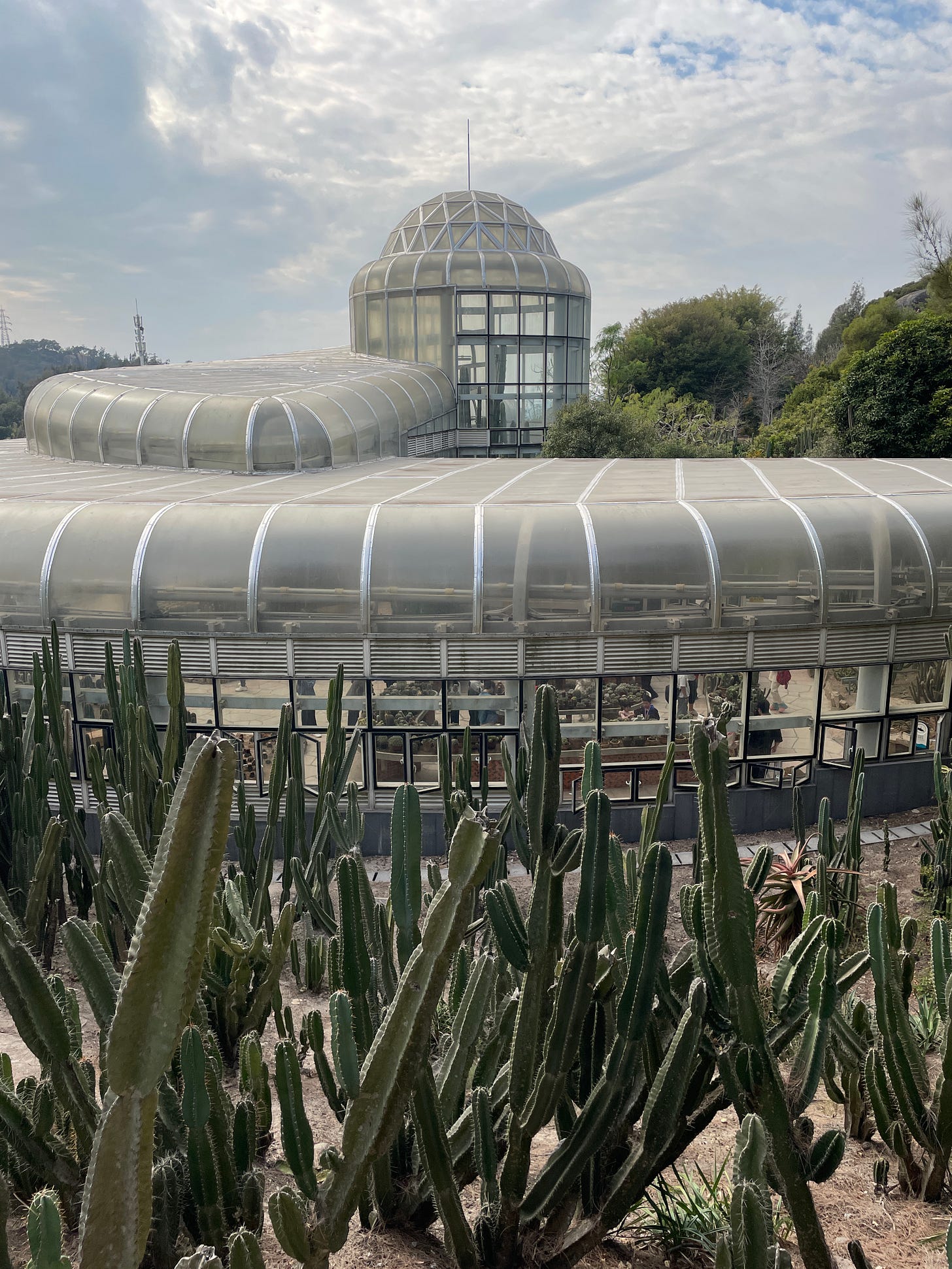
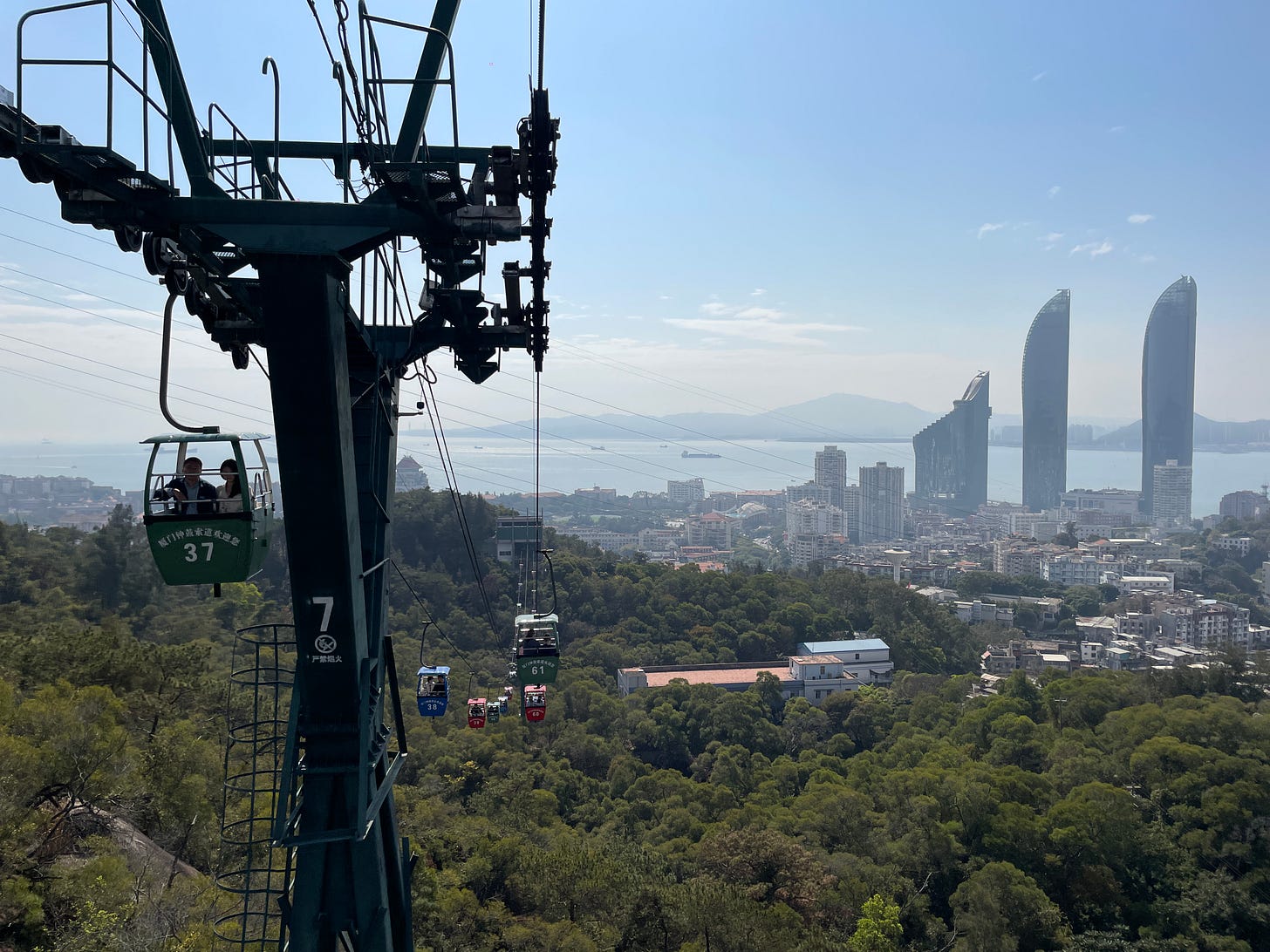
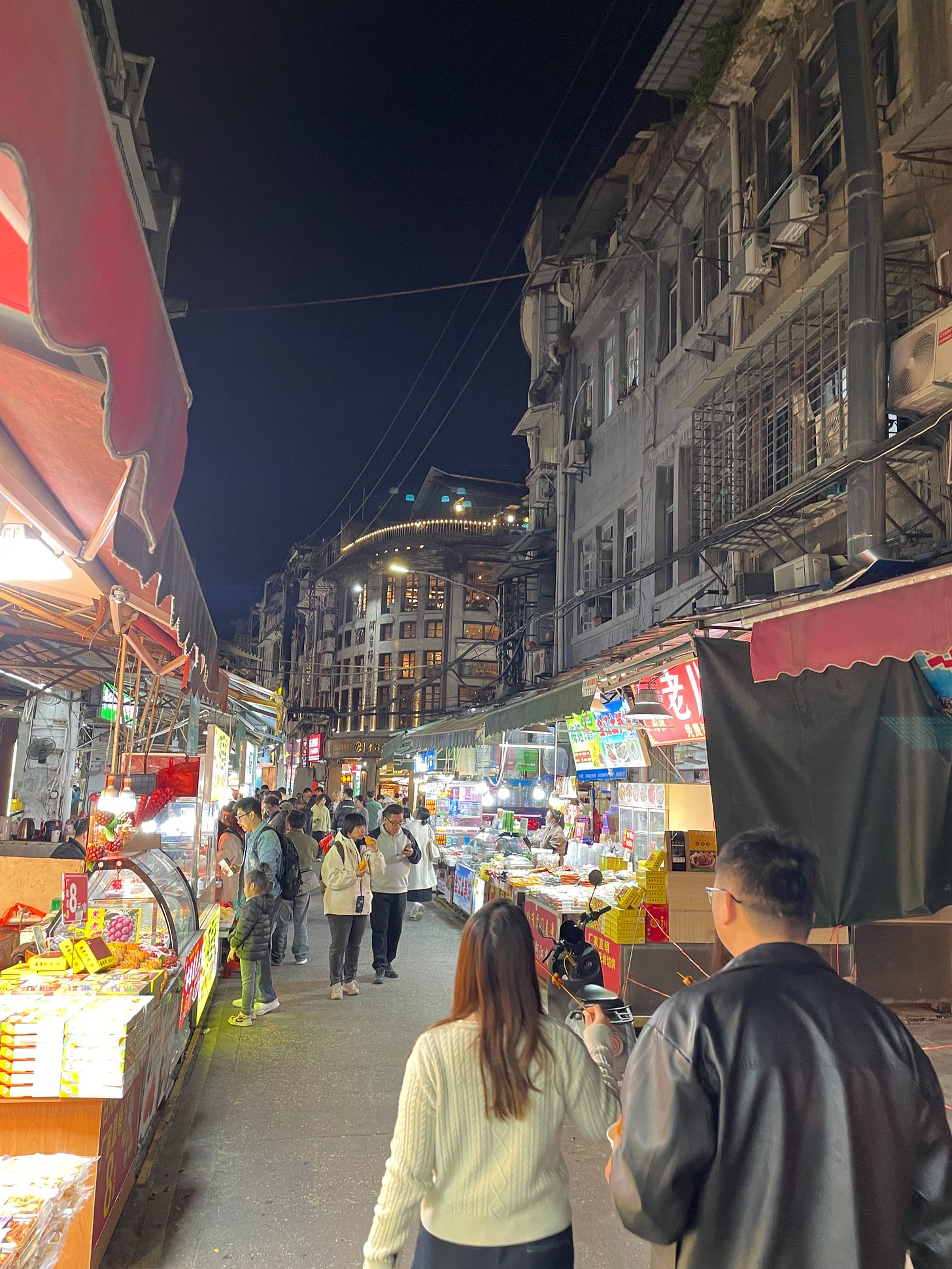
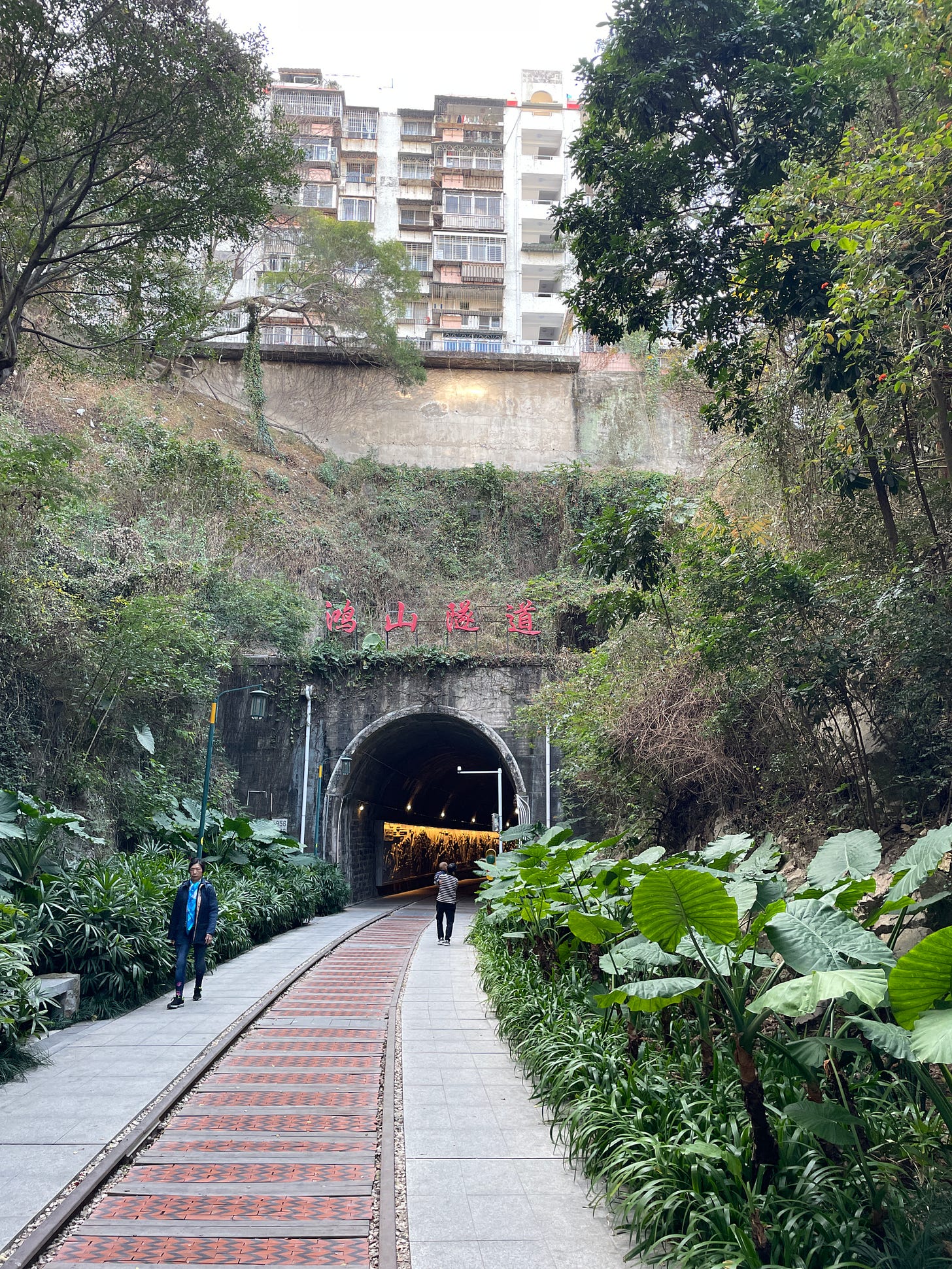
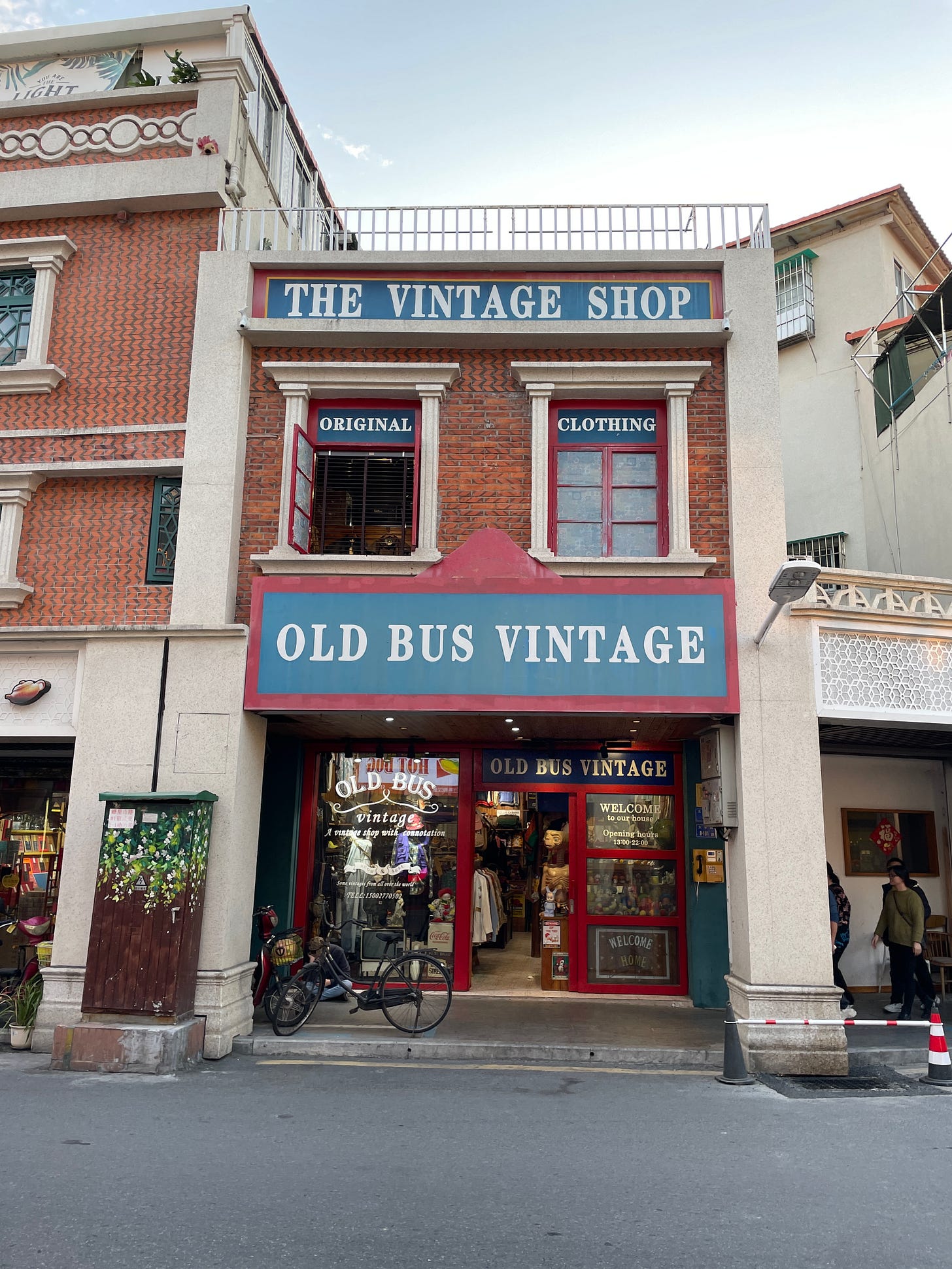
It is ironic that my current project is about history’s longest artillery battle and the lengths taken to lessen the effects on Xiamen
A wonderful trip! I will have to get to Xiamen as a tourist before too long. Have you tried Quanzhou? Fujian has a lot to explore. 🙏